This article has been reviewed according to Science X's editorial process and policies. Editors have highlighted the following attributes while ensuring the content's credibility:
fact-checked
trusted source
written by researcher(s)
proofread
Bees have appeared on coins for millennia, hinting at an age-old link between sweetness and value
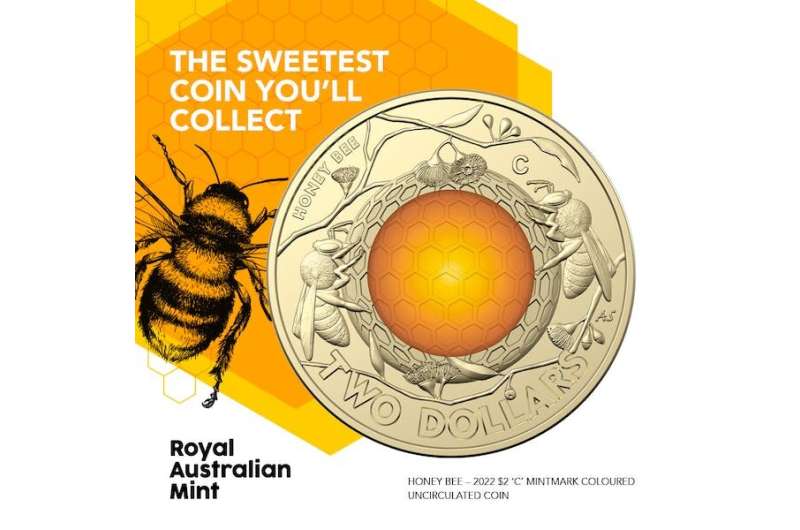
In 2022, the Royal Australian Mint issued a $2 coin decorated with honeybees. Around 2,400 years earlier, a mint in the kingdom of Macedon had the same idea, creating a silver obol coin with a bee stamped on one side.
Over the centuries between these two events, currency demonstrating a symbolic link between honey and money is surprisingly common.
In a recent study in Australian Coin Review, I trace the bee through numismatic history—and suggest a scientific reason why our brains might naturally draw a connection between the melliferous insects and the abstract idea of value.
What is currency and why is it important?
Money is a store of value, and can act as a medium of exchange for goods or services. Currency is a physical manifestation of money, so coins are a durable representation of value.
Coins have had central role in many communities to enable efficient trade since ancient times. Their durability makes them important time capsules.
Ancient Malta was famous for its honey. The modern 3 Mils coin (1972–81) celebrates this history with images of a bee and honeycomb. According to the information card issued with the coin set,
"A bee and honeycomb are shown on the 3 Mils coin, symbolizing the fact that honey was used as currency in Ancient Malta."
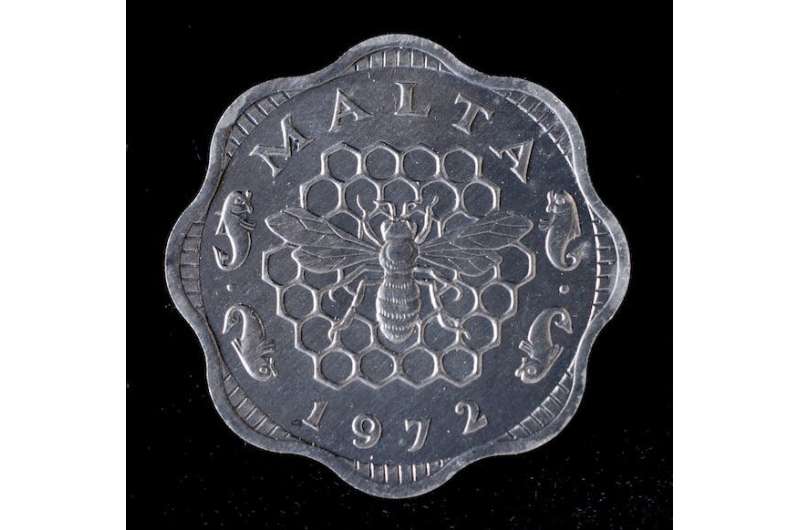
In ancient Greece, bees were used on some of the earliest coins made in Europe. A silver Greek obol coin minted in Macedon between 412 BCE and 350 BCE, now housed in the British Museum, shows a bee on one side of the coin.
Bees also feature on coins minted elsewhere in the ancient Greek world, such as a bronze coin minted in Ephesus dated between 202 BCE and 133 BCE.
The use of bees on ancient coins extended for many centuries including widely circulated bronze coins, and new varieties continue to be discovered.
Why we might like bees on coins
Why have bees appeared so often on coins? One approach to this question comes from the field of neuro-aesthetics, which seeks to understand our tastes by understanding the basic brain processes that underpin aesthetic appreciation.
From this perspective, it seems likely the sweet taste of honey—which indicates the large amount of sugar it delivers—promotes positive neural activity associated with bees and honey.
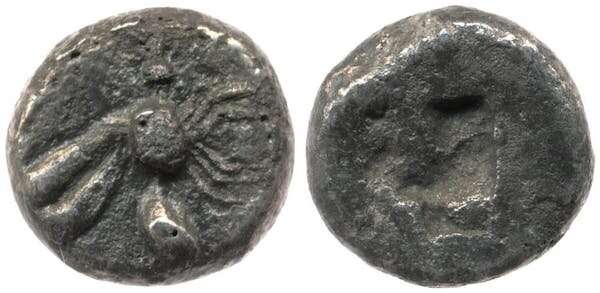
Indeed, primatologist Jane Goodall once proposed that obtaining high-calorie nutrition from bee honey may have been an important step in the cognitive development of primates.
Our brain may thus be pre-adapted to liking bees due to their association with the sweet taste of honey. Early usage of bees on coins may have been a functional illustration of the link between a known value (honey) and a new form of currency: coins as money.
The bee on modern coins
The use of bees as a design feature has persisted from ancient to modern times. A honeybee visiting a flower is shown on a series of ten-centesimi bronze coins issued in Italy from 1919 to 1937.
(As an aside, the world's last stock of pure Italian honeybees is found in Australia, on Kangaroo Island, which was declared a sanctuary for Ligurian bees by an act of parliament in 1885.)
-
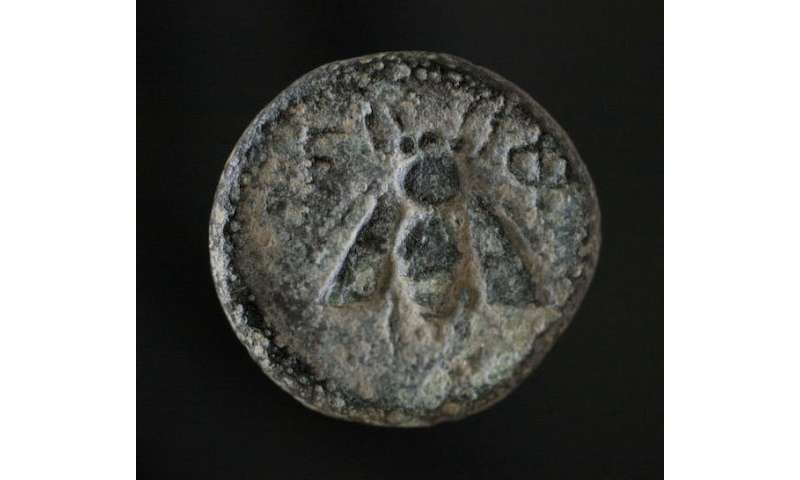
A bronze coin minted in Ephesus, dated between 202BCE and 133BCE, featuring a honeybee. -
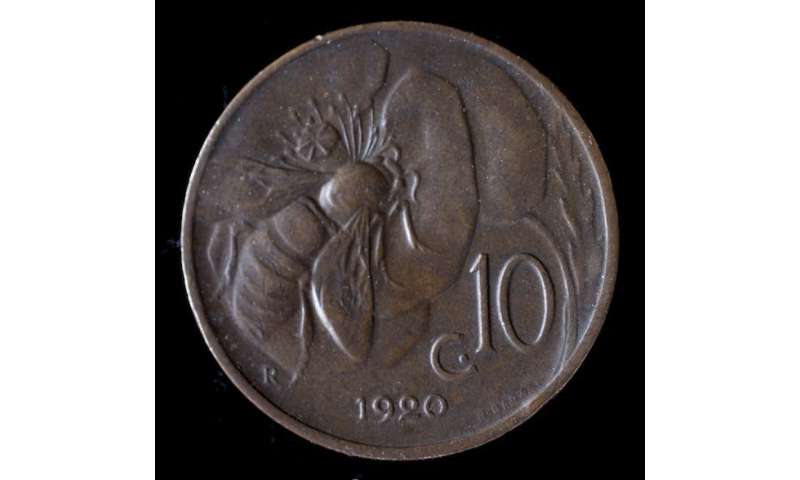
A 1920 Italian bronze ten-centesimi coin featuring featuring an Italian honeybee on a flower.
More recently, a 20-seniti coin from the Pacific nation of Tonga shows 20 honeybees flying out of a hive. This coin was part of a series initiated by the Food and Agriculture Organization of the United Nations to promote sustainable agricultural and cultural development around the world.
Bees are relevant here because their pollinating efforts contribute to about one-third of the food required to feed the world, with a value in excess of US$200 billion per year, and they are threatened by climate change and other environmental factors.
Bees on coins, today and tomorrow
Public awareness of bees and environmental sustainability may well be factors in the current interest in bee coins. The diversity of countries using bees as a design feature over the entire history of coins suggests people have valued the relationship with bees as essential to our own prosperity for a long time.
In Australia, the 2022 honeybee $2 coin is part of a series developed by the Royal Australian Mint. In 2019, the Perth Mint in Western Australia also released coins and stamps celebrating native bees.
Despite the decline of cash, bee coins still appear to be going strong. The buzzing companions of human society are likely to be an important subject for coin design for as long as coins continue to be used.
Provided by The Conversation
This article is republished from The Conversation under a Creative Commons license. Read the original article.![]()




















